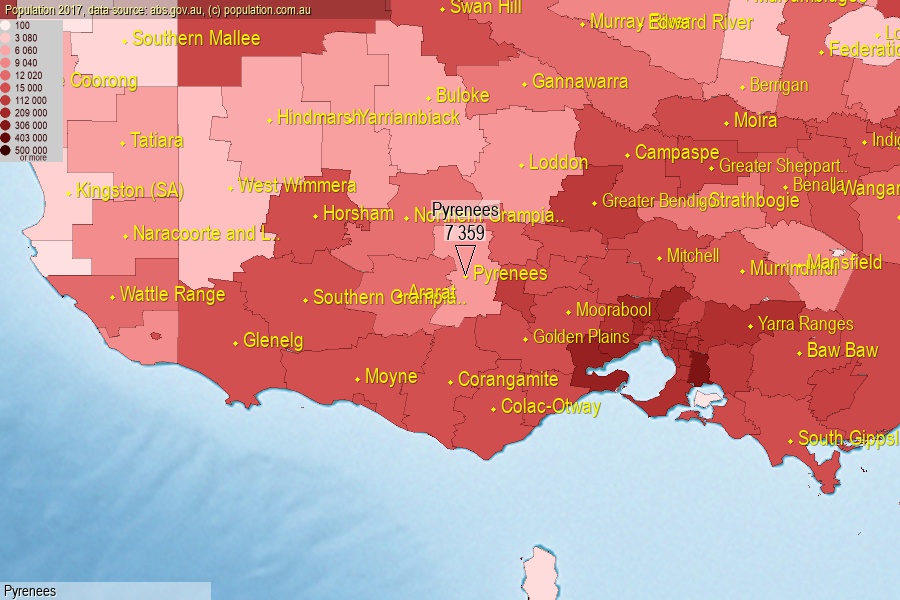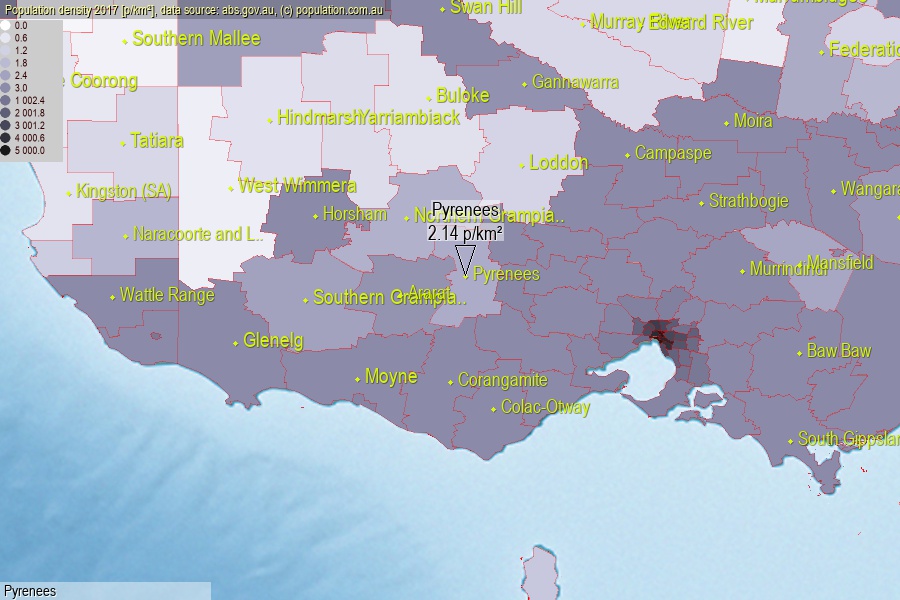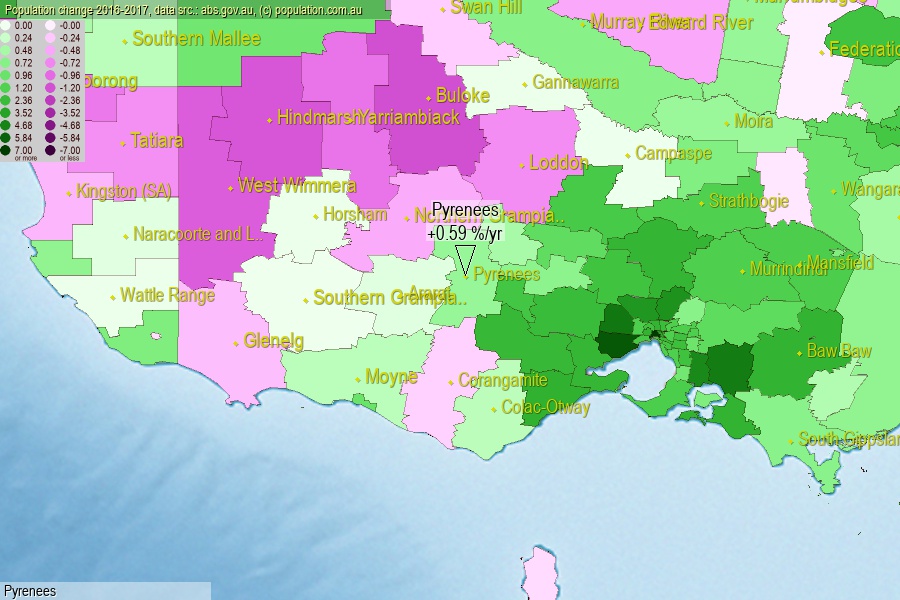 population.com.au
population.com.auLast official estimated population of Pyrenees Shire (as Local Government Area) was 7 359 people (on 2017-06-30)[2]. This was 0.03% of total Australian population and 0.114% of VIC population. Area of Pyrenees is 3 434.60 km², in this year population density was 2.14 p/km² . If population growth rate would be same as in period 2016-2017 (+0.59%/yr), Pyrenees population in 2025 would be 7 712. [0]



Click to enlarge. Pyrenees is located in the center of the images.
Population [people], population density [p./km²] and population change [%/year] [2]
[1996-2001] -1.29 %/Y
[2001-2002] +0.08 %/Y
[2002-2003] +0.08 %/Y
[2003-2004] +0.15 %/Y
[2004-2005] +0.64 %/Y
[2005-2006] +0.68 %/Y
[2006-2007] +0.03 %/Y
[2007-2008] +0.17 %/Y
[2008-2009] +0.90 %/Y
[2009-2010] +0.40 %/Y
[2010-2011] +0.16 %/Y
[2011-2012] +1.49 %/Y
[2012-2013] +1.14 %/Y
[2013-2014] +1.57 %/Y
[2014-2015] +1.87 %/Y
[2015-2016] +1.91 %/Y
[2016-2017] +0.59 %/Y
[0] Calculated with linear interpolation from officially estimated population
[1] Read more about LGA and Australian Statistical Geography Standard (ASGS) on abs.gov.au
[2] Population data from Australian Bureau of Statistics (Population and density: 2017; change: 2016-2017)
[3] Digital Boundaries: Australian Statistical Geography Standard (ASGS) 2016.